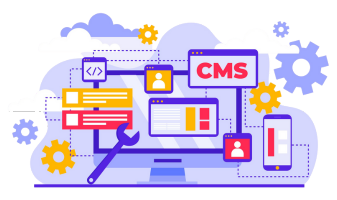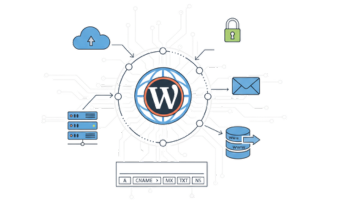In the modern web, user experience is everything. Google found that websites that load slowly, react poorly, or have unstable layouts frustrate visitors and lead to higher bounce rates. To address this, Google introduced Core Web Vitals, a set of metrics designed to measure and improve the real-world experience of users on a web page. These metrics are part of an initiative by Google to make the internet faster, more stable, and more responsive for everyone.
Core Web Vitals are essential for site owners and developers because they help quantify the performance of a website in ways that are directly linked to user satisfaction and SEO performance. Understanding these metrics allows you to identify poor Core Web Vitals and take steps to fix them, ultimately helping your website rank higher in search results.
What Are Core Web Vitals?
At their core, Core Web Vitals are metrics that measure key aspects of the user experience. They focus on three major areas: how fast content loads, how responsive a page is to interactions, and how visually stable the page appears during loading. Together, these metrics form a set of metrics that measure the quality of the content of a web page in a way that directly reflects user satisfaction.
The three main Core Web Vitals include:
- Largest Contentful Paint (LCP) – This measures the time it takes for the largest element on a page, such as a hero image or main banner, to appear. Ideally, this should happen within 2.5 seconds for a good user experience.
- Interaction to Next Paint (INP) – Formerly First Input Delay (FID), this metric evaluates how quickly a page responds when a user interacts with it, such as clicking a button or opening a menu.
- Cumulative Layout Shift (CLS) – This measures how much content moves around while the page loads, ensuring a stable layout that prevents accidental clicks and frustration.
These metrics are collected in real time by the browser and reported through tools such as Google Search Console and the Chrome User Experience Report. By analyzing this data, site owners can see exactly how their websites perform for actual users and determine Core Web Vitals to improve.
Why Core Web Vitals Matter
Web vitals are a set of signals that Google considers when evaluating page experience. Sites with fast loading, responsive interactions, and stable layouts provide a better user experience. Google prioritizes such sites in search results, making Core Web Vitals crucial for SEO in 2025.
If your site has poor Core Web Vitals, users may leave before engaging with your content, which can lead to higher bounce rates and lower conversions. Conversely, optimizing for Core Web Vitals ensures that your website not only meets user expectations but also performs well in search engine rankings.
Google found that even small delays can significantly affect user satisfaction. For instance, if the Largest Contentful Paint takes for the largest hero image to load more than 2.5 seconds, visitors may perceive the site as slow and leave. This highlights the importance of monitoring and improving Core Web Vitals consistently.
How Core Web Vitals Are Measured
The Core Web Vitals metric is measured using both lab data and field data. Lab tests simulate a web page load in controlled conditions, helping developers identify technical issues that may affect performance. Field data, however, is collected from actual users via the browser and the Chrome User Experience Report, showing real-world experiences and how the site performs across different devices and networks.
These metrics do not just provide raw numbers—they measure user experience in meaningful ways. They give insight into how long it takes for key elements to load, how quickly your website responds, and whether the page layout is stable. Tools like Google Pagespeed Insights, Google Analytics, and Google Search Console provide detailed Core Web Vitals data to help site owners take action+
Largest Contentful Paint (LCP)
The Largest Contentful Paint (LCP) measures the time it takes for the largest visible element on a page to load. This is usually a hero image, banner, or main heading. Users judge the speed of a website not by when every element loads, but when the main content becomes visible.
A good Core Web Vital for LCP is 2.5 seconds or less. If it takes longer, users may perceive the page as slow, leading to dissatisfaction. Optimizing for Core Web Vitals in terms of LCP can include compressing large images, using modern formats like WebP, implementing a Content Delivery Network (CDN), and ensuring that server response times are fast.
Interaction to Next Paint (INP)
INP measures the time it takes for a page to respond to user interactions. Slow interactions make a site feel sluggish and unresponsive. Google replaced the old FID metric because FID only measured the first input delay, while INP tracks all interactions. This gives a more accurate picture of how real users experience your website.
Improving this Core Web Vital can involve reducing heavy JavaScript, removing unnecessary plugins, deferring non-critical scripts, and optimizing interactive elements. A responsive site ensures users can navigate smoothly, enhancing both satisfaction and engagement.
Cumulative Layout Shift (CLS)
CLS evaluates the visual stability of a web page. Content that shifts unexpectedly can cause accidental clicks and frustration. A poor Core Web Vital in terms of CLS can hurt the perception of your site even if it loads quickly.
CLS issues are often caused by images without specified dimensions, late-loading ads, or dynamically inserted content. Addressing these problems involves setting explicit sizes for media, reserving space for dynamic elements, and carefully managing font loading and CSS animations.
How Core Web Vitals Affect SEO
Google Core Web Vitals are directly tied to search engine results. Signals that Google considers now include page experience, which is influenced by LCP, INP, and CLS. Websites with good Core Web Vitals are more likely to rank higher in search results, resulting in more visibility and traffic.
Even if content is excellent, poor Core Web Vitals can limit your site’s potential. By monitoring Core Web Vitals data through Google tools and taking action to improve site’s Core Web Vitals, you can gain an advantage in search engine rankings while providing a seamless page experience for your users.
Ways to Improve Core Web Vitals
There are many ways to improve Core Web Vitals. Optimizing images and videos, compressing and caching content, and upgrading your web server can improve LCP. For INP, reducing heavy JavaScript and streamlining interactions ensures the site quickly responds. For CLS, reserving space for images, ads, and dynamic elements prevents layout shifts.
Web vitals can help you prioritize which pages and elements need attention. Using Google Analytics, Search Console, and PageSpeed Insights, you can track performance, identify bottlenecks, and monitor progress over time. This structured approach ensures that your optimizations have lasting impact.
Tools to Measure Core Web Vitals
Several Google tools and browser-based utilities provide insight into Core Web Vitals performance:
- Google Search Console: The console’s Core Web Vitals report highlights pages that meet or fail to meet thresholds. It provides both mobile and desktop data.
- Google Pagespeed Insights: Shows lab and field data, providing detailed recommendations on how to improve Core Web Vitals.
- Chrome DevTools: Offers a real-time view of how long it takes for elements to load and how users experience the site.
- Google Analytics: Can help track performance trends over time, showing whether changes to site’s Core Web Vitals lead to improved engagement.
Conclusion
Core Web Vitals are metrics that measure critical aspects of user experience on a web page. The initiative by Google emphasizes the importance of LCP, INP, and CLS, and they are signals that Google now considers when ranking websites. By understanding how long it takes for key content to load, how responsive your site is, and how stable your layout remains, site owners can identify Core Web Vitals to improve and implement changes that enhance Core Web Vital performance.
In 2025, optimizing for Core Web Vitals is no longer optional. Websites that meet the standards provide a better user experience, perform better in search results, and enjoy higher engagement, trust, and conversions. Monitoring these metrics regularly with Google tools ensures that your website remains fast, responsive, and visually stable—delivering an experience that visitors expect and that Google found is critical for success.




